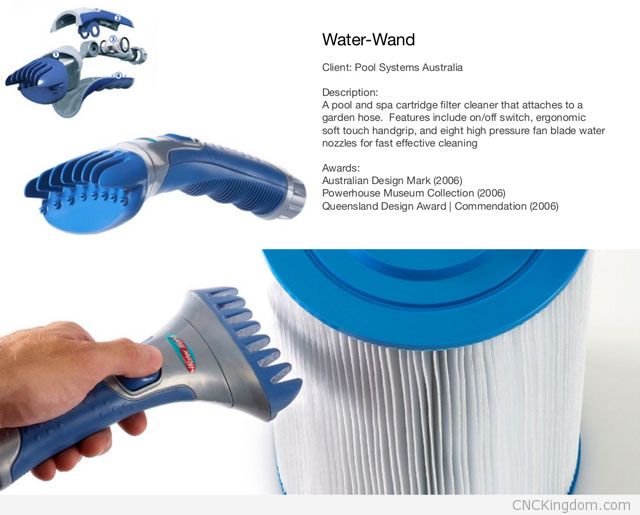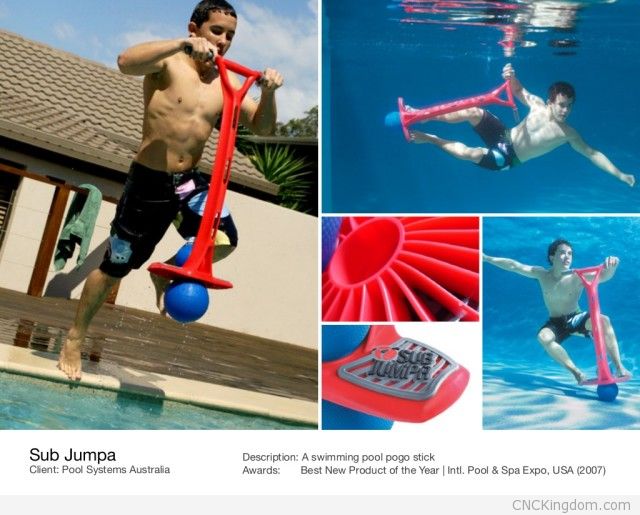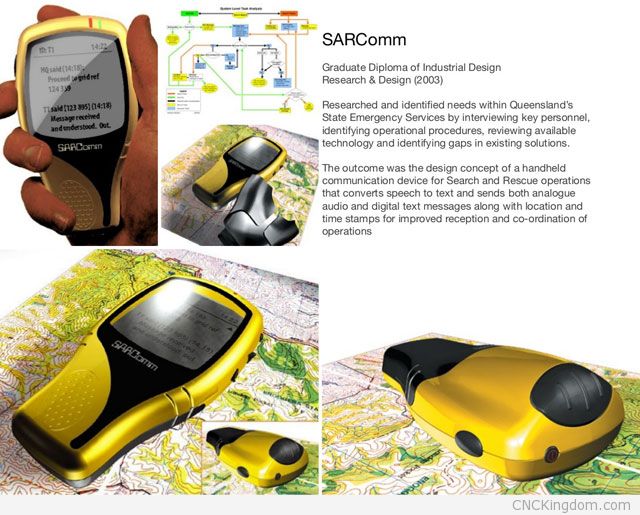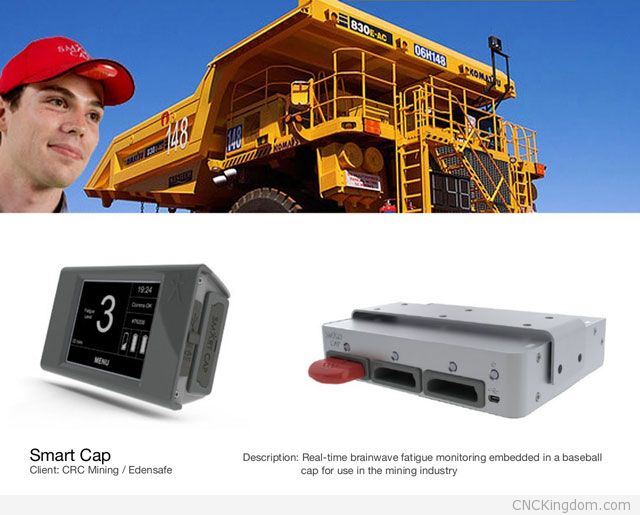Andrew Peterson, Industrial Designer (Australia)
Andrew graduated from Queensland University of Technology with distinctions in both Bachelor of Built Environment (Industrial Design) and Graduate Diploma Industrial Design and followed it up with an apprentiship with one of Brisbane’s top designers, Rob Geddes (Qld Designer of the Year 2008) for 6 years. He has received a number of awards for his work and is currently freelancing to bring client ideas into real world products.
Key takeaways from this interview include:
- Just about all my work in recent years has been through existing contacts and word of mouth.
- To make a great pocket knife you need to have constraints and limit it to the most important features for your purpose
- Ask questions and not just make assumptions.
You can contact Andrew by visiting his website http://andrewpeterson.com.au.
I’ve seen your employment pattern several times – jump from a few design companies before striking it on your own. What do you enjoy most about having your own design firm and how do you go about finding clients? Do you work on a per-project basis or with retainers etc.?
 I love the time flexibility that comes from working for myself… I’m able to work (to a certain extent) when it suits. I can do other tasks during business hours when they’d normally be difficult to fit in, I can go have a coffee with someone or meet a friend who’s passing through town or spend time with family. Work fits in as part of life rather than dominating it and forcing everything else to fit in around it. The downside though is that sometimes it means having to drop other stuff and work crazy hours to get a job done by the deadline as I don’t have someone else I can pass the work onto.
I love the time flexibility that comes from working for myself… I’m able to work (to a certain extent) when it suits. I can do other tasks during business hours when they’d normally be difficult to fit in, I can go have a coffee with someone or meet a friend who’s passing through town or spend time with family. Work fits in as part of life rather than dominating it and forcing everything else to fit in around it. The downside though is that sometimes it means having to drop other stuff and work crazy hours to get a job done by the deadline as I don’t have someone else I can pass the work onto.
Just about all my work in recent years has been through existing contacts and word of mouth. This has been great as it means limited spending on advertising and sitting on phones cold-calling etc, however from a business perspective it’s only been just enough to keep me going.
To date all of my work (besides my own ideas that I’m developing) is on a per-project basis, but I have some great clients that regularly feed me new work. I’ve started to explore the possibility of retainers and royalties but so far haven’t got any takers.

How well did Queensland University of Technology prepare you for your career in industrial design and have the design awards you’ve won or been nominated for helped you gain the exposure you needed to break into the field on your own?
It’s nice to be able to create a beautiful concept but if it can’t be produced, all it ends up being is a piece of art. At the time I went through QUT, its course was heavily weighted to design for manufacture. In terms of employment opportunities in Australia I believe that it was beneficial as most industrial design here requires being able to take a product all the way through the process from the first brainstorming session to final documentation for manufacture.
In saying that, I’ve always loved the early brainstorming and concept design stages and it is the area of design I’ve been trying to strengthen and focus on in recent years now that I have a strong foundational knowledge of manufacturing including the exciting advancements of the 3D Printing realm and what limitations can be pushed.
Like most university courses, once you hit the workplace you realise how much there is you still don’t know and you hit some of the steepest learning curves yet, but I felt QUT’s course set me in good stead to start off my career.
Winning awards and having products shown in exhibitions is always encouraging as a designer as it’s recognition of a job well done. Beyond possibly giving confidence to a prospective client that I’m good at what I do though, I’ve never had a client tell me that I’ve got the job because of previous awards I’ve won – most of my clientele comes through word of mouth.

Your Sub Jumpa underwater pogo stick is a neat idea – how did the idea come-up and although it’s been 7 years since you designed it, did it gain any traction in the consumer marketplace after winning Best New Product of the Year at the Year at the International Pool & Spa Expo 2007? What were some of the challenges coming-up with this design in both form and function?
The Sub Jumpa was a client inspired project to adapt a recently out-of-patent land based product into a swimming pool toy. Using the inflated/water-filled double-ball turned out to be a non-negotiable and became the basis that everything else had to be worked around. Jumping in water is difficult due to the extra resistance, and using the double-ball approach meant that the amount of actual jump was limited in comparison to some other approaches we briefly explored in the concept stage. Ultimately this caused the Sub Jumpa to become more of a platform for doing slow motion BMX-like stunts than a pogo stick for jumping.
From a styling perspective the brief was relatively flexible so we had a great time exploring different concepts and approaches in the concept stage. We had to design around issues of underwater drag and resistance and also had to allow for mis-use – the footplate was designed to withstand a 100kg+ adult using it on dry land – good thing too as apparently whilst on show at the Pool & Spa Expo, the first thing people did was pick it up and start bouncing down the aisles!
One of the biggest challenges though was actually the CAD modelling using ProE Wildfire 2. There are almost no straight lines or flat surfaces to use for reference on the product, and I remember having particular issues getting the complex blend of the handle-bar stem into the footplate around the ball to work in such a way that it also kept tooling as simple as possible.
I believe the client had moderate success following the launch and being awarded Best New Product of they Year. However in the longer term, it’s as a design/art piece that it has been an attention grabber. It’s been on display at Brisbane’s GoMA and State Library and more recently as part of the ‘Hightide’ book launch and exhibition of Qld Design at Artisans Gallery, and like this interview, is the piece that always seems to draw attention… maybe it’s just the inner-child in all of us trying to get out.

You came-up with the SARComm which is basically a phone for Search and Rescue before cell phones became popularized and everywhere – this does raise an interesting question though – how do you build technology that will last and not be completely replaced a few years down the road by a massive consumer product revolution? What were some of the goals of this project and looking back, why wasn’t the smart phone revolution so obvious to all of us?
This research project came at a time of changing cellular technologies in Australia with analogue services shutting down as digital took over. We also have a lot of remote and rugged terrain (and hence poor signal coverage at times) to contend with. The concept boiled down to trying to combine the best of analogue/radio style technology for voice with automatic dictation and digital text messaging to provide the best coverage regardless of signal strength to ensure a message got through, as well as providing location data through GPS. All of these combined would assist with improving communication, co-ordination and efficiency in Search and Rescue situations.
I got my first pda-phone in 2005. It had GPS that was difficult to use, a small (by today’s standards) screen that was pressure sensitive, and, with the add-on of a wi-fi SD card I bought on a trip through Japan gave basic internet access while traveling. I knew then that I wouldn’t go back to a ‘normal’ cellphone, but there is a huge difference between that device and what we now call modern smartphones. Why wasn’t the smartphone so obvious to us though?
Later in that same trip, I was in Switzerland and saw a demonstration model of a giant Wenger Swiss Army knife – it had every available tool built in, all 87 of them! This knife could do everything, but would have been completely unwieldy to actually use due to its size.
Steve Jobs was quoted in a Wired interview in 1996 as saying that, “Creativity is just connecting things. When you ask creative people how they did something, they feel a little guilty because they didn’t really do it, they just saw something. It seemed obvious to them after a while. That’s because they were able to connect experiences they’ve had and synthesize new things. And the reason they were able to do that was that they’ve had more experiences or they have thought more about their experiences than other people.” (http://www.wired.com/wired/archive/4.02/jobs_pr.html)
To make a great pocket knife you need to have constraints and limit it to the most important features for your purpose. In a similar way, whilst not creating the first ‘smartphone’, Jobs and Apple were able to connect certain technologies, software and features, creating a phone that was more than just a single tool but not one that tries to do everything – a device that was aesthetically pleasing, very well manufactured to extremely tight tolerances and could do a lot of useful things whilst remaining very user friendly and intuitive at a reasonable price.
I always tell clients not to attempt to create the ultimate swiss army knife – different people have different needs and uses, so establish early on in the brief what your needs and market priorities are and do a good job of solving those issues. As you work on broadening your experience and ability to connect the most relevant dots, you’ll be able to design a product that is much more difficult for somebody else to ‘revolutionise’.

You have some very nice sketches – were you always a good drawer or is it a skill you taught yourself as part of your design education? Even after designing over 250 CNC projects for my site CNCKing.com, I still can’t draw anything beyond stick figures… my design process is 100% digital… is there any hope for people like me? On a related note, I even have trouble writing with a pen now as I type 99% of my correspondence!
I’ve always enjoyed drawing as a hobby… I started with landscapes as a kid (mostly with pencil) and these days am challenging myself to improve my ability to draw people and other characters, scenes and storyboards, however I never studied Art at school. The first year of my university course was was restricted to hand drawn presentations and was my first foray into drawing products. CAD deliberately wasn’t introduced until 2nd year. We had some good drawing tutors, but it was working at PROdesign that would have to be the biggest driver for learning to draw products. Whilst many consultancies go straight to CAD from early concept stages, we would stick to sketches and hand illustrations through Brainstorming, Concepts and even working out details and designing parts for manufacture and assembly. CAD generally came in much later once the design was mostly resolved. Small details would always change during CAD but on the whole, the end result worked out very close to initial sketches and hand made mockups.
Tips & Tricks
- Draw something everyday – just start with objects you can see in front of you and don’t be afraid to make mistakes, you’re not creating the Mona Lisa.
- It may feel like cheating, but use underlays – that used to mean using light tables. Now with digital drawing on iPads and Wacom drawing tablets you can quickly create layers and put a base photo of a similar item or very rough block CAD model underneath, turn down the opacity and then draw your new concept over the top on a new layer in the right scale and perspective.
- Periodically turn your sketch upside down or flip it horizontally – it makes it easier to notice where your perspective is going wrong.
- There are also some good resources out there when it comes to product sketching. The book I used at university was “Presentation Techniques” by Dick Powell. Koos Eissen also has some very good books on Product Sketching.

Since moving to Australia, I find it odd that you have on-off switches on all your electrical fittings – in North America, we just plug things in the wall and take the plug out. I’m sure there are many cultural design differences as well that you have to contend with – what are some of the nuances of designing you’ve discovered during your career and how do you design with a global perspective when there may be regional differences in form and function for products?
Besides different power points in every country the other most blatantly obvious product difference I’ve come across would have to be toilets… I’ve seen everything from holes in the ground to fully automated, heated, adjustable and self-cleaning toilets that have more controls on them than your TV remote, and unlike power points where the main issue can be solved by using the correct plug or adapter, using a toilet is based on user interaction and is something that many people struggle with and have to re-learn when changing cultures.
A recent example I heard of a flow on effect of this cultural difference regarding hygiene and user interaction is of a new expatriate doctor in Africa who at the end of a consultation would hand a patient their medication on the way out the door and couldn’t work out why the patients were throwing it away as soon as they left the building. An observant nurse realised that the doctor was using his left hand (a cultural taboo as the left hand is traditionally seen as ‘unclean’ and used only for personal hygiene matters) to pass the medication as it was the closest to the meds – this implied to the patients that the medication itself was unclean and simply rubbish. By putting the medication on the other side of the door, the doctor now uses his right hand and people keep their medication.
There are many different reasons products are designed differently – some are purely practical or relate to standards, others relate to historical influence and cultural traditions and are often harder to identify as an outsider. There’s great opportunity when designing something for a different culture to apply your experience from an outside perspective to create something groundbreaking and revolutionary but care must be taken too as it’s very easy, as the doctor found out, to commit a faux pas that leads to catastrophic failure.
The biggest tip I can think of is to ask questions and not just make assumptions. This is something that should also be done when designing within your own culture. “Why?” is a good one to start with, but take it to a few levels.
Q1. “Why is ‘a’ done this way?”
A1. “Because of ‘b’.”
Q2. Why is ‘b’ done that way?”
A2. “Because of ‘c’.”
Q3. “Why was ‘c’ done that way?”
A3. “Because…”
Once finding the answer to ‘c’ you should have a much better understanding of the cultural context and reasons of existing products and what scope there is to change or challenge those reasons. You’ll find that some things ‘just are’ because nobody has shown a better way whereas others may rely on external factors out of your control, Government Standards/requirements, or reasons so deeply entrenched in culture and custom that whilst it may be a great idea will fail no matter what.
Another important thing to consider is to get your hands dirty – go there! Meet and talk with the people you are designing the product for, you may be amazed at the insight they have that can help you on your way to a successful product.

Anything else you’d like to add?
Over the years I’ve worked on a range of products across numerous industries. Some have been simple, some very complex, some fun to work on and others mind-numbingly boring and seemingly pointless. A lot of products are ultimately about meeting wants and desires but I’d have to say the jobs I’ve found most satisfying are the ones that target a real need and can make a difference to people’s quality of life. If you’ve never had the opportunity to work on such a project I’d encourage you to do so – even if it’s voluntary and just an hour or two out of your week – there’s a lot of people in need that could benefit greatly from good design.
Thanks for the opportunity to share with your readers.

